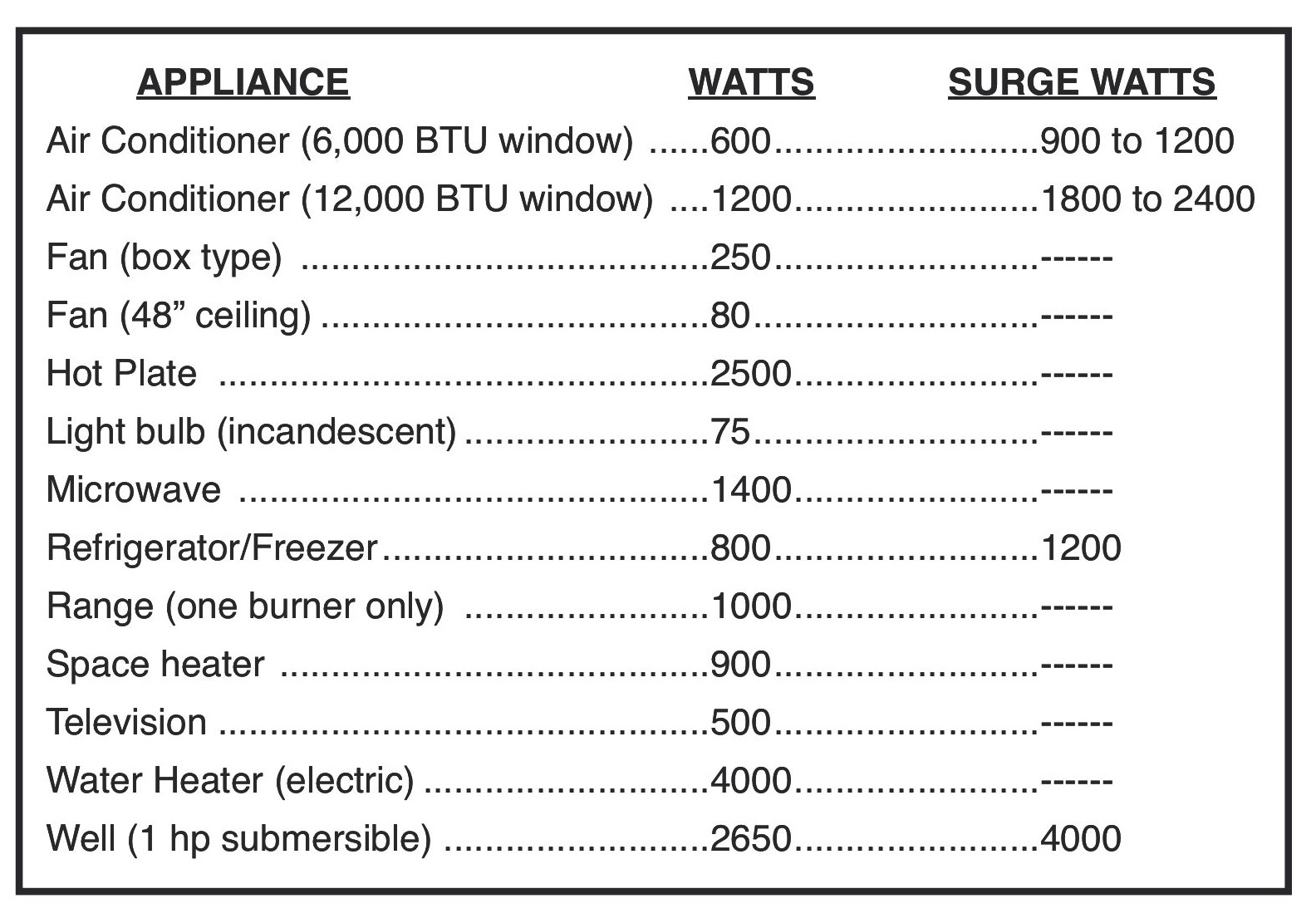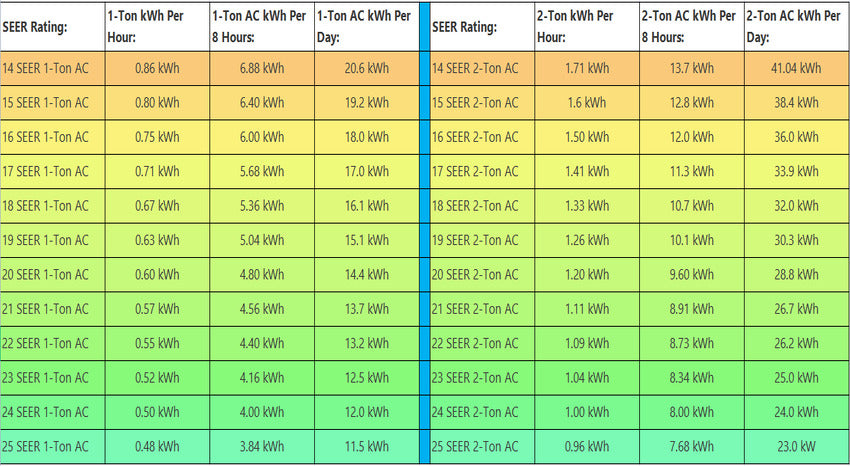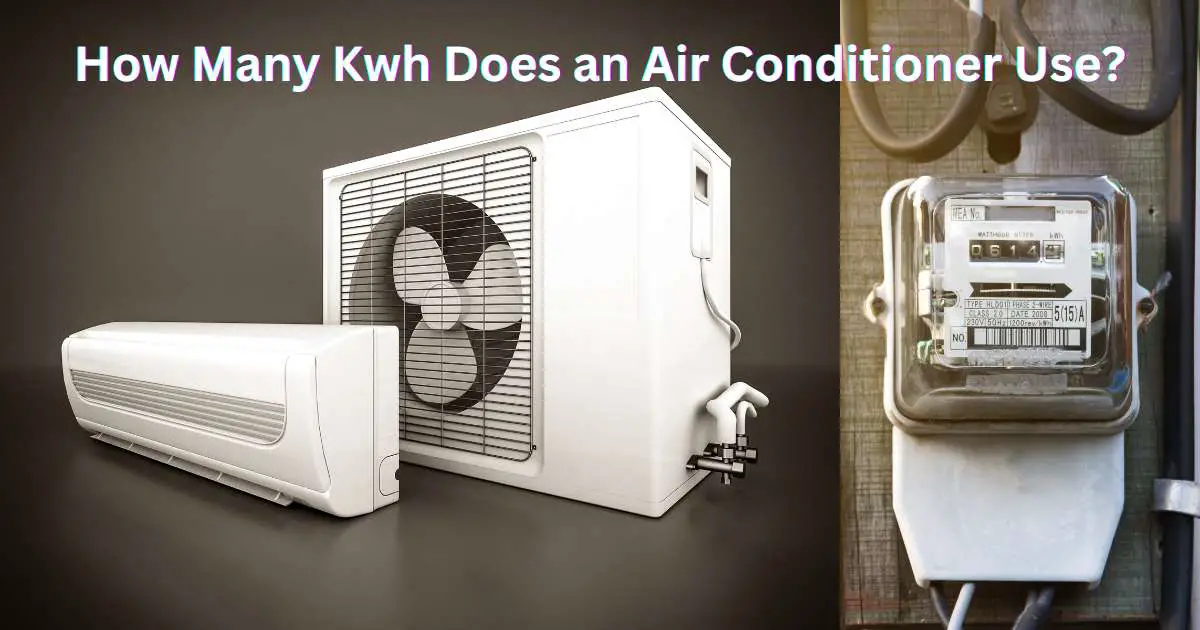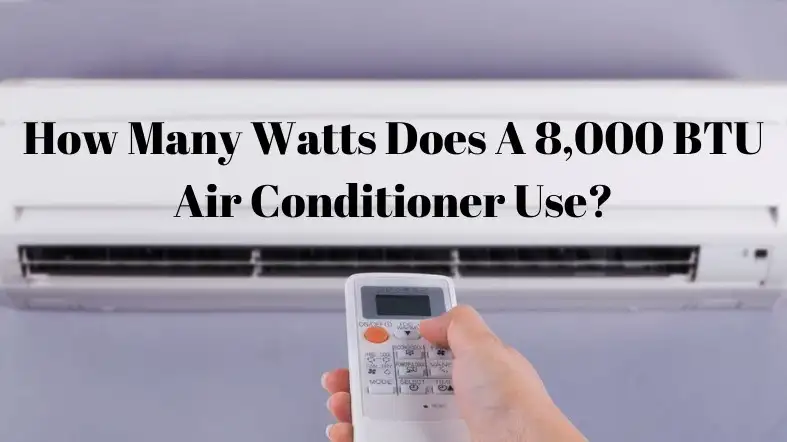How Much Wattage Does An Air Conditioner Use

Are you facing unexpectedly high energy bills, even though you haven't changed your air conditioning usage? Or perhaps your AC unit struggles to cool your home effectively, especially during peak summer hours? These are common frustrations for homeowners, and often, the culprit is related to your air conditioner's wattage consumption. Understanding how much wattage your AC unit *should* be using, and identifying factors that cause it to use more than expected, is the first step towards a more efficient and comfortable home. This guide will provide you with a methodical approach to troubleshooting AC wattage issues, empowering you to take control and potentially save money on your energy bills.
Understanding AC Wattage and Its Importance
Before diving into troubleshooting, let's clarify what AC wattage means and why it matters.
- Wattage: Wattage is a measure of electrical power. Your air conditioner uses electricity (measured in watts) to operate its components, such as the compressor, fan, and control circuits.
- Importance: Higher wattage means higher electricity consumption, and therefore, a higher energy bill. An inefficient AC unit consumes more wattage than necessary to achieve the desired cooling effect.
The wattage rating of your AC unit is usually found on the unit's nameplate (typically located on the outdoor condenser unit or the indoor air handler). It's crucial to know this baseline wattage to determine if your AC is performing as expected.
Troubleshooting: Is My AC Unit Using Too Much Wattage?
Here’s a step-by-step guide to help you determine if your AC unit is consuming excessive wattage.
Step 1: Gather Information
This initial step involves collecting essential information about your AC unit and energy usage.
- Locate the Nameplate: Find the nameplate on your AC unit (indoor or outdoor). Look for the "Watts" or "kW" (kilowatts - 1 kW = 1000 Watts) rating. This is the rated wattage of your unit. If it provides Amps and Voltage, then you have to calculate the wattage yourself.
- Convert kW to Watts (if necessary): If the nameplate shows kW, multiply the value by 1000 to get the wattage. Example: 3 kW = 3000 Watts.
- Check Your Energy Bill: Examine your recent energy bills for patterns. Are your bills significantly higher during months when you heavily use your AC? This is a crucial indicator.
- Note Your AC Usage: Keep track of how often and for how long you use your AC each day. This will help you correlate usage patterns with energy consumption.
Tools Needed: None for this step.
Step 2: Visual Inspection (No Tools Required)
A thorough visual inspection can often reveal obvious issues that contribute to increased wattage consumption.
- Air Filter: This is the *most common* culprit. Check the air filter in your indoor unit. A dirty air filter restricts airflow, forcing the AC unit to work harder and longer, consuming more energy. A clean filter significantly improves efficiency. Replace dirty air filters immediately.
- Outdoor Unit (Condenser): Inspect the outdoor unit for debris such as leaves, grass clippings, or branches obstructing the airflow. Clear away any obstructions around the unit, ensuring at least 2-3 feet of clear space.
- Indoor Vents: Make sure that all your indoor vents are open and not blocked by furniture, curtains, or other objects. Blocked vents impede airflow and force the AC unit to overwork.
- Seals and Insulation: Check around windows and doors for drafts. Poorly sealed windows and doors allow cool air to escape, forcing the AC to run longer to maintain the desired temperature. Look for gaps or cracks and consider using weather stripping or caulk to seal them. Check the insulation in your attic and walls. Poor insulation causes the AC to work harder and waste energy.
- Ductwork (if visible): Inspect any exposed ductwork for leaks or damage. Leaky ducts allow cool air to escape before it reaches the intended rooms. Sealing ductwork can significantly improve efficiency.
Tools Needed: None for this step.
Step 3: Basic Operational Checks (No Tools Required)
These checks involve observing how your AC unit operates and identifying any unusual behavior.
- Cooling Performance: Does your AC unit cool your home effectively? Is it struggling to maintain the set temperature, especially during hot weather? Poor cooling performance is a sign that the unit is working harder than it should.
- Short Cycling: Is your AC unit turning on and off frequently in short intervals (short cycling)? This can indicate a problem with the compressor, refrigerant levels, or other components.
- Unusual Noises: Listen for any unusual noises coming from the AC unit, such as rattling, buzzing, or hissing sounds. These noises can indicate mechanical problems that could be increasing energy consumption.
- Thermostat Setting: Ensure your thermostat is set to a reasonable temperature. Lowering the temperature drastically will force the AC unit to run continuously and consume more energy. Consider raising the temperature a few degrees to see if it makes a difference.
Tools Needed: None for this step.
Step 4: Measuring Actual Wattage Consumption (Requires Basic Equipment)
This step requires a device to measure the actual wattage your AC unit is consuming. There are several options:
- Kill-A-Watt Meter: This simple device plugs into an outlet, and you can then plug your AC unit (if it uses a standard wall outlet) into the meter. It will display the real-time wattage consumption. This is most suitable for window AC units.
- Clamp Meter (Ammeter): A clamp meter is a more versatile tool that can measure the current (amps) flowing through the AC unit's wiring. You'll also need to measure the voltage at the unit. Then, use the formula: Wattage = Amps x Volts. Caution: Working with electrical wiring can be dangerous. If you are not comfortable working with electricity, skip this step and consult a qualified electrician.
To use a clamp meter safely:
- Turn off the power to the AC unit at the circuit breaker.
- Locate the wires leading to the AC unit's compressor.
- Clamp the meter around one of the wires (not both).
- Turn the power back on at the circuit breaker.
- Read the amperage displayed on the meter.
- Measure the voltage at the unit (between the wires).
- Calculate the wattage.
Compare Actual Wattage to Rated Wattage: Compare the wattage you measured with the rated wattage on the nameplate. If the actual wattage is significantly higher (e.g., 15-20% or more), it indicates that the AC unit is consuming more energy than it should.
Tools Needed: Kill-A-Watt meter or Clamp Meter (Ammeter), Voltmeter (if using a clamp meter).
Step 5: Identifying Potential Causes of High Wattage Consumption
Once you've confirmed that your AC unit is consuming excessive wattage, you need to pinpoint the underlying cause.
- Dirty Coils: The condenser coils (located in the outdoor unit) and the evaporator coils (located in the indoor unit) can become dirty over time, reducing their ability to transfer heat efficiently. This forces the AC unit to work harder and consume more energy. *Cleaning the coils requires specialized cleaning solutions and tools and is generally best left to a professional HVAC technician.* However, you can gently brush off loose debris from the outdoor condenser coils with a soft brush. Be careful not to damage the delicate fins.
- Refrigerant Leaks: Low refrigerant levels can significantly reduce cooling performance and increase energy consumption. If you suspect a refrigerant leak (e.g., hissing sound, ice buildup on coils), *contact a qualified HVAC technician immediately.* Refrigerant leaks can be harmful to the environment and require specialized equipment to repair.
- Compressor Issues: The compressor is the heart of the AC unit. If the compressor is failing or inefficient, it will consume more energy. *Compressor problems are complex and require professional diagnosis and repair.*
- Fan Motor Problems: The fan motors in the indoor and outdoor units help circulate air. If these motors are failing or inefficient, they can increase energy consumption. *Testing and replacing fan motors often requires specialized tools and knowledge and is best left to a professional.*
- Ductwork Leaks: Leaky ductwork allows cool air to escape before it reaches the intended rooms, forcing the AC unit to work harder. *Sealing ductwork can be a DIY project using duct tape or mastic sealant, but larger leaks or inaccessible ductwork may require professional attention.*
DIY Actions You Can Take (Safely)
Based on your troubleshooting results, here are some DIY actions you can take to improve AC efficiency and reduce wattage consumption:
- Replace the Air Filter: As mentioned earlier, this is the most crucial and easiest step. Replace dirty air filters regularly (every 1-3 months) to ensure optimal airflow.
- Clear Obstructions Around the Outdoor Unit: Remove any debris, plants, or other obstructions that are blocking airflow around the outdoor unit.
- Seal Windows and Doors: Use weather stripping or caulk to seal gaps and cracks around windows and doors to prevent cool air from escaping.
- Ensure Proper Ventilation: Make sure all vents are open and unobstructed.
- Adjust Thermostat Settings: Experiment with slightly higher thermostat settings to see if you can maintain a comfortable temperature without overworking the AC unit.
- Use Ceiling Fans: Ceiling fans can help circulate air and make the room feel cooler, allowing you to raise the thermostat setting.
- Close Curtains and Blinds: During the hottest part of the day, close curtains and blinds to block out sunlight and reduce heat gain in your home.
- Seal Obvious Ductwork Leaks: Use duct tape or mastic sealant to seal any obvious leaks in exposed ductwork.
When to Call a Professional HVAC Technician
While some issues can be addressed with DIY actions, certain problems require the expertise of a qualified HVAC technician.
Call a professional if you encounter any of the following:
- Refrigerant Leaks: Refrigerant leaks require specialized equipment and knowledge to repair safely and effectively.
- Compressor Problems: Compressor issues are complex and require professional diagnosis and repair.
- Dirty Coils: Cleaning the coils thoroughly requires specialized cleaning solutions and tools.
- Fan Motor Problems: Testing and replacing fan motors often requires specialized tools and knowledge.
- Electrical Issues: If you suspect any electrical problems with your AC unit, such as a burning smell or sparking, *turn off the power to the unit immediately and call a qualified electrician.*
- Unsure of the Problem: If you've gone through the troubleshooting steps and are still unsure of the cause of the high wattage consumption, it's best to consult a professional HVAC technician for a comprehensive diagnosis.
Preventative Maintenance for Optimal AC Efficiency
Regular preventative maintenance can help keep your AC unit running efficiently and prevent problems that lead to increased wattage consumption.
- Schedule Annual Tune-Ups: Have your AC unit professionally inspected and tuned up annually. This typically includes cleaning the coils, checking refrigerant levels, lubricating moving parts, and inspecting electrical connections.
- Regular Air Filter Replacement: Replace the air filter regularly (every 1-3 months) to maintain optimal airflow.
- Keep the Outdoor Unit Clean: Keep the outdoor unit free of debris and obstructions.
By following these troubleshooting steps and taking preventative measures, you can effectively manage your AC unit's wattage consumption, reduce energy bills, and enjoy a more comfortable home. Remember, safety is paramount. When in doubt, always consult a qualified HVAC technician.










